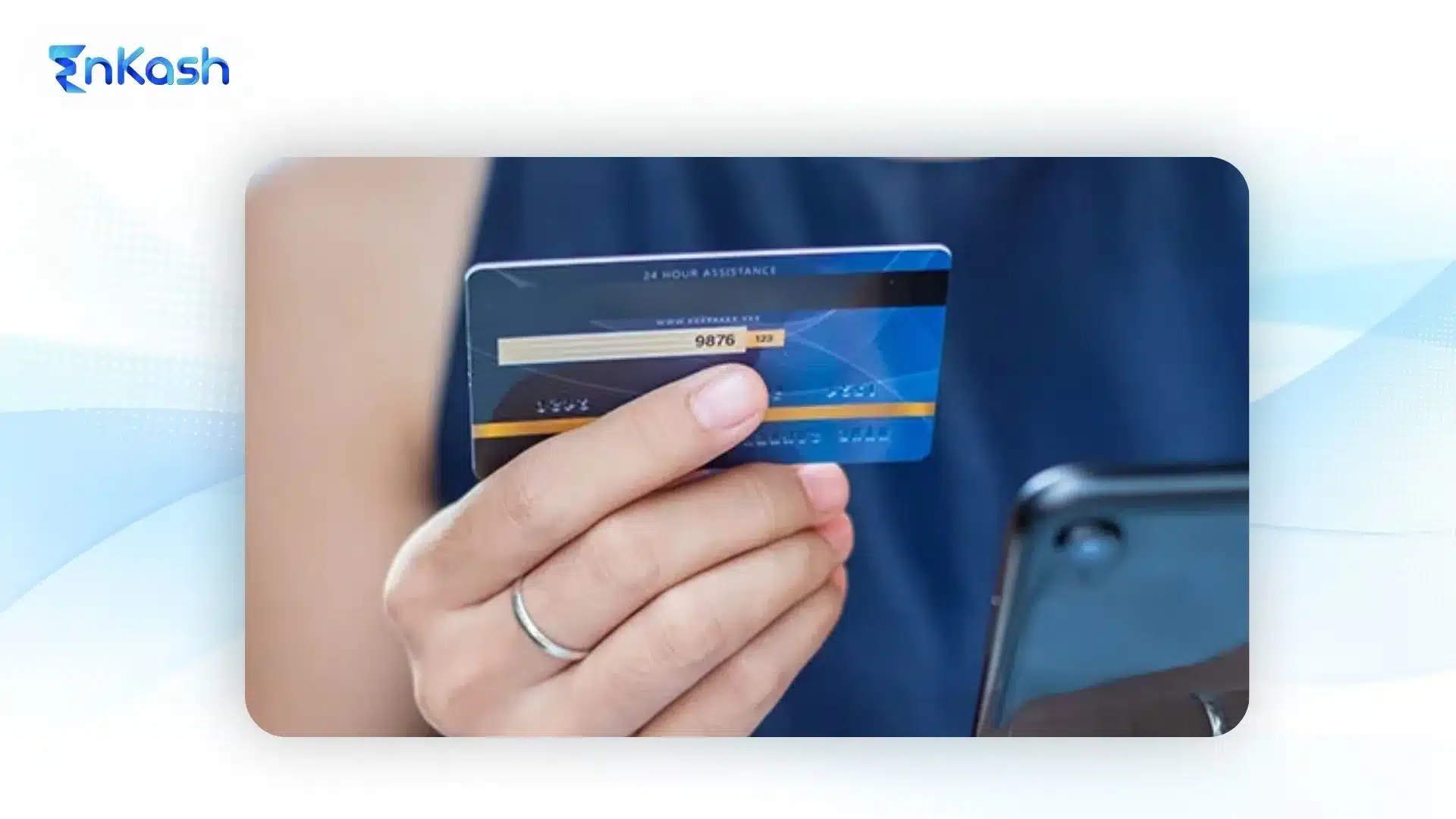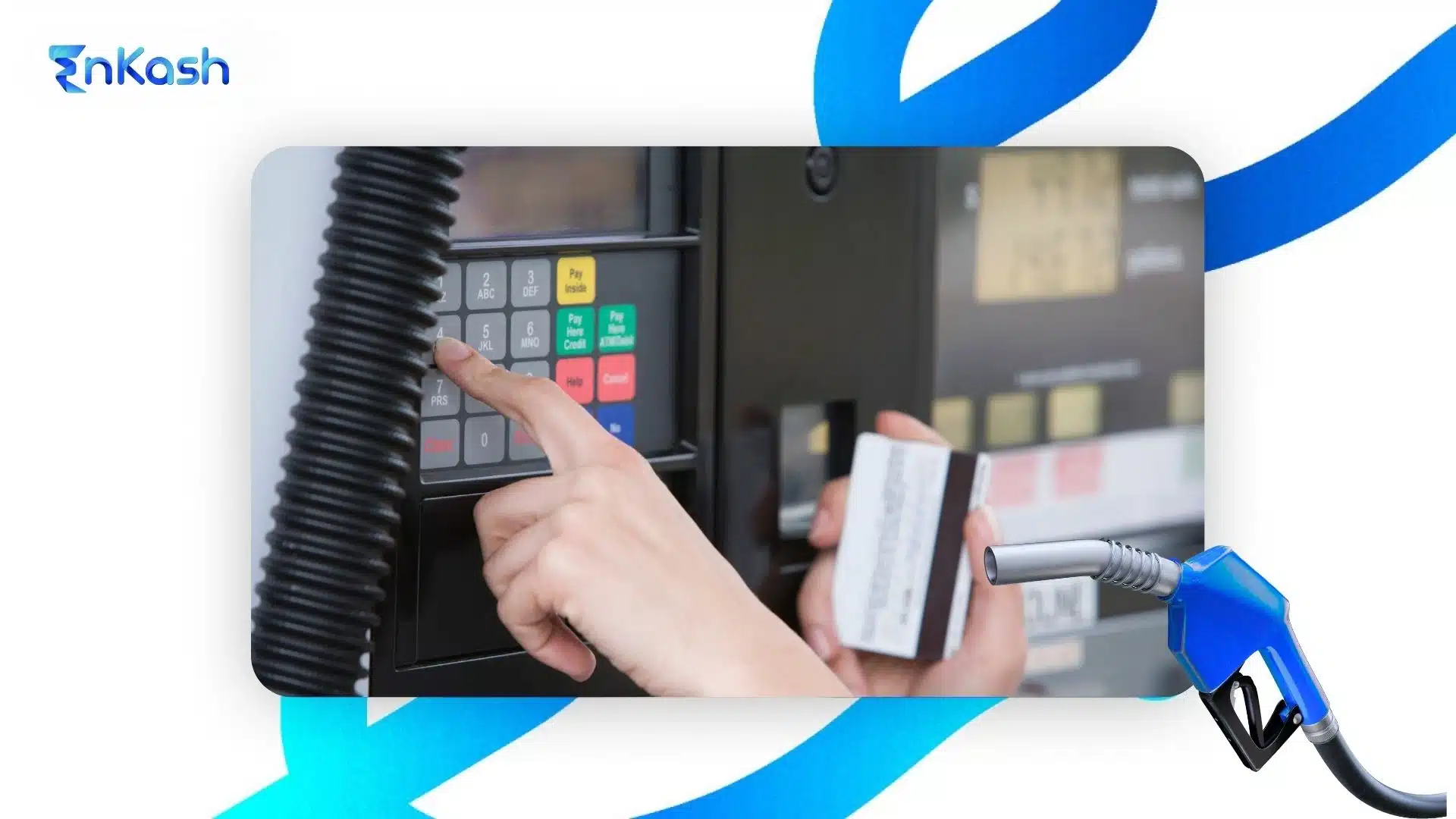Fuel is a large part of business expenses in India. Prices move up and down without warning, and every increase can affect transport companies, delivery services, and even small firms with a few vehicles on the road. When fuel takes a big share of the budget, controlling these costs becomes a priority.
For years, businesses depended on cash reimbursements or manual logs to manage fuel payments. These methods often led to misuse, errors, and a lack of clarity. A better way is now available. Prepaid fuel cards allow companies to set clear spending limits and track every rupee spent at the pump.
The value of these cards lies in two things: reducing unnecessary costs and providing accurate tracking. They bring structure to fuel spending and give managers the tools to monitor usage in real time. In this blog, we will explore how a corporate fuel card in India can create savings, improve accountability, and help companies move towards smarter expense management.
What Are Prepaid Fuel Cards?
A prepaid fuel card is a simple payment tool designed for buying petrol or diesel. Instead of paying cash or collecting paper receipts, a business can load money onto the card in advance. Drivers then use the card at authorised fuel stations, and the payment is deducted directly from the balance.
These cards are different from regular credit or debit cards. They are created with fuel spending in mind. A company can fix spending limits, track usage for each vehicle, and stop misuse at the same time. Unlike cash, which is hard to monitor, every transaction made with a smart card for petrol and diesel payments is recorded.
For businesses managing fleets, this makes fuel payments organised and predictable. From a single car used by a sales executive to dozens of trucks covering long routes, the system works in the same way. The result is greater control and less confusion around daily fuel expenses.
Rising Impact of Fuel Costs on Businesses
Fuel is one of the hardest expenses for a business to predict. Prices move up and down with little warning, and this makes financial planning very difficult. For companies that run vehicles every day, even a small rise in cost has a direct effect on profit margins. The challenge is not only the price itself but also the way fuel payments are handled inside the business. Weak systems make the impact even worse.
Here are some of the key issues faced by businesses:
- High share of operating cost: For firms in transport, logistics, or delivery services, fuel can account for a large portion of total expenses. This leaves less room for salaries, maintenance, or investments in growth.
- Uncontrolled spending: Cash reimbursements and handwritten logs create space for misuse. Drivers may over-report, inflate bills, or submit unclear claims, and managers have no simple way to check.
- Fuel theft and pilferage: Small fuel leakages or pilferage often go unnoticed. Over time, these leakages build into large yearly losses that could have been avoided with proper monitoring.
- Poor record keeping: Paper receipts and scattered slips are unreliable. This makes it hard to track fuel expenses accurately and leaves gaps in reporting.
- Tax compliance gaps: Without proper invoices, companies lose the ability to claim input tax credits. This raises the effective cost of fuel and hurts the bottom line further.
- No real-time visibility: Managers get delayed or incomplete information. By the time irregularities are noticed, the money is already gone, and corrective action comes too late.
A corporate fuel card in India helps address these problems by creating structure. It gives managers real-time control, keeps spending within limits, and reduces waste. Fuel management becomes predictable, and businesses gain the confidence that every rupee is being used as planned.
How Prepaid Fuel Cards Reduce Costs
Fuel may seem like a straightforward expense, but in reality, businesses lose money on it in many hidden ways. Cash payments, missing receipts, and poor visibility create gaps that quickly add up. A fuel card for cost control helps close these gaps and makes sure every litre is accounted for.
Here is how a prepaid fuel card brings savings to companies:
- Stops cash misuse: Cash transactions are hard to monitor and easy to manipulate. Employees can submit inflated bills, duplicate receipts, or even use funds for personal trips. With a card, payments are made directly at the pump, and every transaction is automatically recorded, leaving no space for false claims.
- Gives rewards and rebates: Many cards are designed with small incentives built into each transaction. Savings per litre may not look large at first, but across dozens of vehicles and hundreds of trips, they grow into a significant yearly reduction in fuel spend.
- Makes GST claims easier: Claiming tax benefits requires proper invoices, and in a cash-heavy system, these are often missing or incomplete. With digital transactions, invoices are generated automatically. Companies can use them to claim input tax credits, reducing the effective cost of fuel.
- Highlights low-mileage vehicles: Fuel reports help managers see which vehicles are consuming more than expected. This insight shows where maintenance is needed or when it might be time to replace an inefficient vehicle.
- Keeps spending in control: Limits can be fixed per driver or vehicle. This ensures budgets are respected, prevents overspending, and creates a culture of discipline in how fuel money is used.
- Reduces hidden expenses: Real-time tracking reveals irregular activity such as unauthorised trips, idling for long periods, or refuels outside planned routes. Stopping these small leaks makes a noticeable difference over time.
By using a corporate fuel card in India, businesses create a system where fuel costs are transparent, predictable, and easier to manage. It turns a complicated expense into something structured, reducing waste and improving efficiency.
How Prepaid Fuel Cards Improve Expense Tracking
Tracking fuel by hand is a confusing process. Paper slips are misplaced, handwritten notes are unclear, and managers often receive incomplete details long after the fuel has been consumed. This lack of timely information leads to confusion and weak control over expenses. A prepaid fuel card for expense tracking changes this completely by creating a digital system that is transparent, reliable, and easy to use.
Here are the ways these cards improve tracking:
- Every transaction is recorded: Each time a card is swiped, the system captures the date, time, station, and amount. This builds a complete and accurate record that can be checked at any point. There is no need to rely on drivers for receipts or memory-based reporting.
- Driver and vehicle level clarity: Payments can be tied directly to individual drivers or vehicles. This makes it simple to track fuel usage with a prepaid card and identify which vehicle is consuming more than expected. Managers can link spending to performance without guesswork.
- Geo-fencing and route limits: Some cards allow restrictions on where they can be used. If a driver attempts to refuel at a non-approved location or outside the planned route, the transaction is blocked. This reduces misuse and ensures vehicles stick to their schedules.
- Real-time alerts for managers: Every payment triggers an immediate notification through SMS or an app. Managers know exactly when and where fuel is being purchased. This instant visibility helps them act quickly if something unusual happens.
- Integration with systems: Digital transactions can connect with expense software or fleet dashboards. This eliminates the need for manual data entry, reduces mistakes, and provides clean, consolidated reports for management.
- Audit-ready records: Since every detail is stored digitally, businesses are always prepared for audits or reviews. This saves time, improves compliance, and ensures financial accuracy.
Simply put, to monitor fuel spend with prepaid card systems means replacing scattered paper trails with structured digital data. It removes uncertainty and gives businesses a clear, data-driven view of their fuel expenses.
Advanced Functionalities for Fleet Tracking
A prepaid fuel card is more than a payment tool. It gives managers smart features that make fuel tracking accurate and easy to act upon.
Key features include:
- Smart dashboards for managers: Clear reports show how much fuel each vehicle uses and how spending changes over time. Managers can see patterns without digging through piles of slips.
- Analytics for efficiency: Transaction data highlights vehicles that give poor mileage. Fixing or replacing such vehicles saves fuel in the long run.
- Linking with telematics: When connected with GPS, the card links distance travelled to actual fuel bought. This makes it easier to check if spending matches real usage.
- Predictive insights: Over months, the system learns the usual needs of each vehicle. Managers can then plan fuel budgets more accurately and avoid wastage.
- Fraud prevention: Alerts flag unusual activity such as multiple refuels in a short time or fills at unexpected stations. Quick detection reduces losses.
Using the best fuel card for fleet tracking turns fuel data into action. It allows companies to see problems early, plan better, and protect their budgets.
Relevance for Small and Medium Enterprises
A corporate fuel card in India is not just for large fleets. Smaller firms can also gain by using them, as fuel often takes up a big share of their running costs. For these businesses, controlling every rupee matters.
Here is how small and medium enterprises benefit:
- Simple to start: Setting up a card system is easy. Even a firm with two or three vehicles can load funds, set limits, and begin tracking without complex processes.
- Clear expense records: Every transaction is stored digitally. Owners no longer need to depend on paper bills or uncertain driver reports.
- Helps manage tight budgets: Limits can be fixed per week or per trip. This makes it easier to avoid overspending when cash flow is restricted.
- Supports growth: As the business expands, the same card system can handle more vehicles without adding extra paperwork.
- Better visibility for owners: Business owners get direct insights into how fuel is being used, giving them confidence that money is spent only on the fleet.
Using corporate fuel cards for small businesses helps reduce confusion and gives structure to fuel spending. It turns what was once a scattered process into something that is simple and controlled.
Regulatory and Compliance Considerations
Prepaid fuel cards issued by banks and fintechs fall under RBI’s Prepaid Payment Instrument (PPI) guidelines. Cards issued by oil companies may be governed under their own frameworks if closed-loop.
Important points to know:
- KYC requirements: Cards can only be issued after completing customer verification. Basic verification allows a smaller limit, while full verification allows higher limits.
- Usage limits: Depending on the type of card, there is a maximum balance that can be loaded. This ensures funds are used within safe boundaries.
- Digital transaction trail: Each payment is recorded. This makes audits and internal checks easier for businesses.
- GST compliance: While fuel itself is outside the ambit of GST, digital invoices still help with better record-keeping and expense management. For fuels or lubricants under GST, ITC can be claimed where applicable..
- Security standards: Cards are designed to prevent misuse, with built-in protections against fraud and unauthorised transactions.
By following these rules, a corporate fuel card in India not only helps manage costs but also keeps a business aligned with tax and compliance needs.
Potential Challenges and Practical Limitations
A prepaid fuel card makes fuel spending easier to control, but it is not without challenges. Knowing the limits helps businesses prepare better.
- Acceptance restrictions: Some cards may work only at selected fuel stations. This can create problems if drivers operate in remote areas with fewer options.
- Learning curve for drivers: Employees used to cash payments may need time to adjust to a card-based system. Clear instructions are required in the beginning.
- Technical downtime: Point-of-sale machines at fuel stations can sometimes fail, delaying payments and adding frustration.
- Costs of usage: Annual fees or reload charges may apply. These need to be checked and compared before choosing a card system.
- Balancing with other payments: Companies may still need cash or other digital modes in special cases, as cards alone may not cover every expense.
Understanding these points ensures that businesses get the most out of their fuel cards without being caught off guard.
Conclusion
Managing fuel costs is a constant challenge for businesses. Prices shift often, and without the right system, money leaks through misuse, poor tracking, and missing records. A prepaid fuel card offers a structured way to bring this under control. It combines payment convenience with strict monitoring, giving managers both savings and transparency.
By using a fuel card for cost control, companies can cut down on inflated bills, secure GST benefits, and set spending limits that keep budgets in line. At the same time, the ability to monitor fuel spend with prepaid card tools means every transaction is visible in real time.
The real strength lies in how these cards support businesses of all sizes, from small firms to large fleets. With better tracking, tighter controls, and smarter insights, fuel cards create a clear path to lower costs and greater efficiency.
FAQs
1. How does a prepaid fuel card differ from fuel vouchers or coupons?
Fuel vouchers are one-time paper-based instruments with fixed values, while a prepaid fuel card works like a digital wallet that can be reloaded multiple times. Cards provide better tracking, set limits per driver, and give businesses control that paper vouchers cannot.
2. Can a prepaid fuel card help improve driver accountability?
Yes. Linking transactions to individual drivers means managers can see who refuels, when, and where. This reduces the chances of false claims or misuse. Drivers become more accountable since every litre they purchase is recorded and tied to their ID or vehicle.
3. Are prepaid fuel cards suitable for businesses with seasonal operations?
They work well for seasonal businesses because funds can be loaded only when vehicles are in use. Companies can keep balances low during off-seasons and increase them when operations peak, making cash flow management much smoother.
4. Do prepaid fuel cards allow businesses to set daily spending caps?
Yes. Many cards let managers assign daily or weekly limits to each driver or vehicle. This prevents overspending and ensures fuel budgets are spread evenly across operations. It also helps stop unnecessary trips or excessive fuel use.
5. How do prepaid fuel cards assist during audits?
Since every payment is stored digitally with details such as date, time, and amount, auditors get a ready-made record. This reduces paperwork, lowers the risk of missing receipts, and ensures compliance. Audits become faster and more accurate, saving time for the finance team.
6. Can prepaid fuel cards track fuel efficiency across routes?
Yes. By comparing distance travelled against fuel purchased, managers can evaluate efficiency for different routes. If certain routes consistently show higher fuel use, adjustments can be made to save costs. This data-driven insight is valuable for logistics and transport planning.
7. What security measures protect prepaid fuel cards?
Prepaid fuel cards are secured with PINs, OTPs, and transaction limits. If lost, they can be blocked immediately through the provider’s portal or helpline. The digital trail ensures that misuse is quickly detected and stopped, offering greater safety than cash reimbursements.
8. Do prepaid fuel cards reduce the administrative load on finance teams?
Yes. Since transactions are digital, finance teams no longer need to handle stacks of fuel receipts. Reports can be downloaded in seconds, making reconciliations and monthly expense tracking faster. This reduces manual work and errors in record-keeping.
9. How can prepaid fuel cards support tax planning?
Digital invoices generated through prepaid fuel cards help businesses claim input tax credits. Since records are organised and transparent, companies avoid losing eligible credits due to missing receipts. This lowers the effective fuel cost and makes tax planning more efficient.
10. Are prepaid fuel cards useful for businesses with mixed fleets?
Yes. Companies that run cars, vans, trucks, or even CNG vehicles can manage all fuel spends under one system. Managers get combined reports, which provide a clear picture of overall fuel use, regardless of vehicle type or size.







